
What are the best perch fishing rigs to use?
To be consistently successful with big “stripeys”, it helps if you build an armoury of different perch fishing rigs to suit any situation you might face. At the same time, understanding the purpose of each rig is really important. It’s easy to get totally confused and overwhelmed if you can’t match each rig to a specific job. In other words, don’t just learn more and more rigs for the sake of it!
Below you’ll find both lure and bait fishing rigs to choose from…
Perch Fishing Rigs for Lures
BFS perch fishing rigs (ultralight baitcasting reels)
The terminal end of these rigs can be even simpler than a classic perch spoon rig (see further down this article for those), since one option is to simply tie a lure directly to the end of your 4lb fluorocarbon reel line. Alternatively, using braid for the reel line – maybe as light as 6 or 8lb breaking strain – and a short “leader” of fluorocarbon is also possible. Whether you use a soft plastic and jig hook or a small hard-bodied crank bait, BFS-style is a really fun way to target perch.

There’s more detail on fishing soft plastic “shad” style baits in the Perch Jig Setup article.
You’ll need to master casting with a BFS baitcasting reel (especially with light baits – where you will need to ensure you have a very light spool and excellent, clean bearings). Alternatively, if you don’t want to go down the BFS route, ultralight spinning gear with a fixed spool reel is a great way to go too.
Texas Rig (for fixed-spool or baitcaster)
A really useful perch fishing rig for snaggy “cover”, the Texas rig can be used with pretty much the entire range of soft plastic baits available to you. Anything from worms, creature baits, shads and whatever takes your fancy are good options. The offset, wide-gape hook is a key component (allowing good hook-ups while still accounting for the thickness of the bait). The kink next to the hook-eye also helps to hold the bait straight under light tension to the hook-bend.
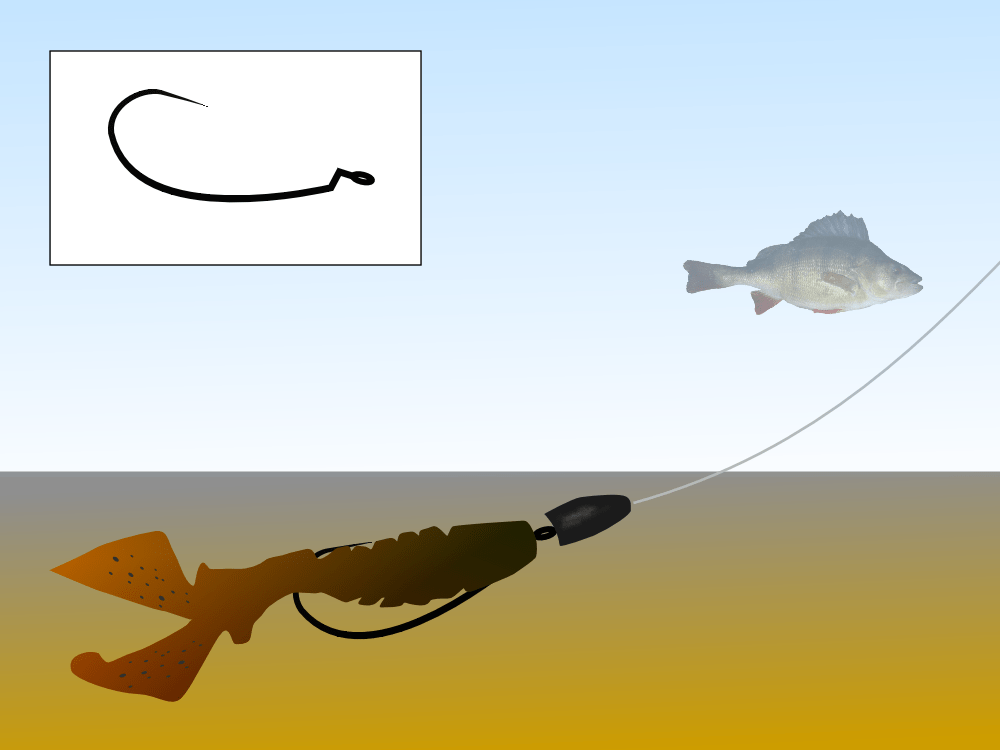
Often used to fish slowly along the bottom - the sliding sinker is allowed to snug up directly against the the lure attachment point (you have the option to put a glass "clicker" bead (see Carolina rig below) between the hook-eye and the sinker). You can also peg the weight close to the hook-eye using a float-stop.
While the original “Texas rig” specifically included the sliding bullet/cone sinker, nowadays it can also be short-hand for rigging your soft plastic baits in a weedless manner on the offset/worm hooks.
The "weedless" performance comes from sliding your hook-point into the plastic bait - often having it laying flat directly on the upper surface of the bait.
That way, weed slides over the bait without snagging the hook-point - but when a fish grabs and you swing the rod to set the hook; the point is exposed and hits home.
Having the weight pegged close to the hook can help to punch your bait into cover and creates a very direct contact for strike detection – as well as the classic jig-head style action.
Carolina Rig (fixed spool or baitcaster)
Using the same “Texas” style rigging of soft plastic baits, the addition of a leader creates separation from the sliding weight. Consequently a more subtle, wafting/hovering presentation is possible.
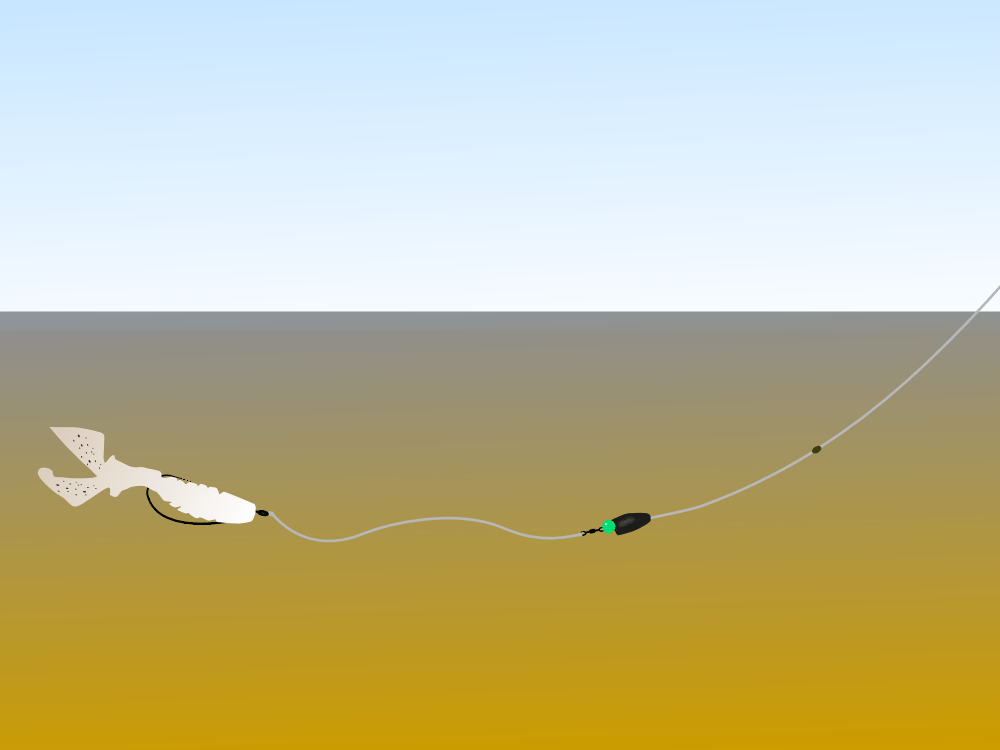
Using glass “clicker” beads (highlighted in bright green above) for the weight to smack against may also increase attention and widen the sphere of influence of your lure.
Free Rig (Fixed Spool or Baitcaster)
This one is a bit of a secret weapon. Borrowed from super-pressured bass fishing methods, the free rig uses a freely-sliding weight (which needs a ring-shaped line-tie and NOT a drop-shot style narrow/clip style line-tie). This is one of Chris' AKA "anorak_szn" (insta: @anorak_szn) favourite rigs. It probably works best when using fluorocarbon straight through to the Weedles/Texas-rig-style mounted) bait.

The action is really interesting because you get a slightly accelerated fall through the water as the weight (sinker) tends to slide down, along the line away from the bait. The, when the sinker hits the bottom, the bait suddenly kicks out and then either spirals or flutters in a much slower free-fall. This "gear-change" style action is great for triggering hits from fish that see a lot of lures and a lot of standard presentations.
Cheburashka Rig (Fixed Spool predominantly)
Back to a more “jig-like” action, Cheburashka (or “Cheb”) perch fishing rigs let you quickly change both the colour and how heavy your weight is. It is also ideal for using a weedless “Texas” rigging of your hook-bait.

The "Cheb" weight system is shown in detail (top) as well as in use with the hook (bottom)
This deceptively simple idea is a really useful tool to increase your flexibility and the speed with which you can fine-tune the presentations of your perch fishing rigs. Some anglers even use it to fish streamer and baitfish-pattern flies; which have a great profile and action in the water.
Swing Jig (baitcaster or fixed spool)
A similar weight design to the Cheburashka – but shaped like an American football with the attachment wire loops set at 90-degrees to each other (actually a range of specialist head-shapes and snag-free/recessed tie-in points are available). This creates a jointed – free-swinging action of the bait.
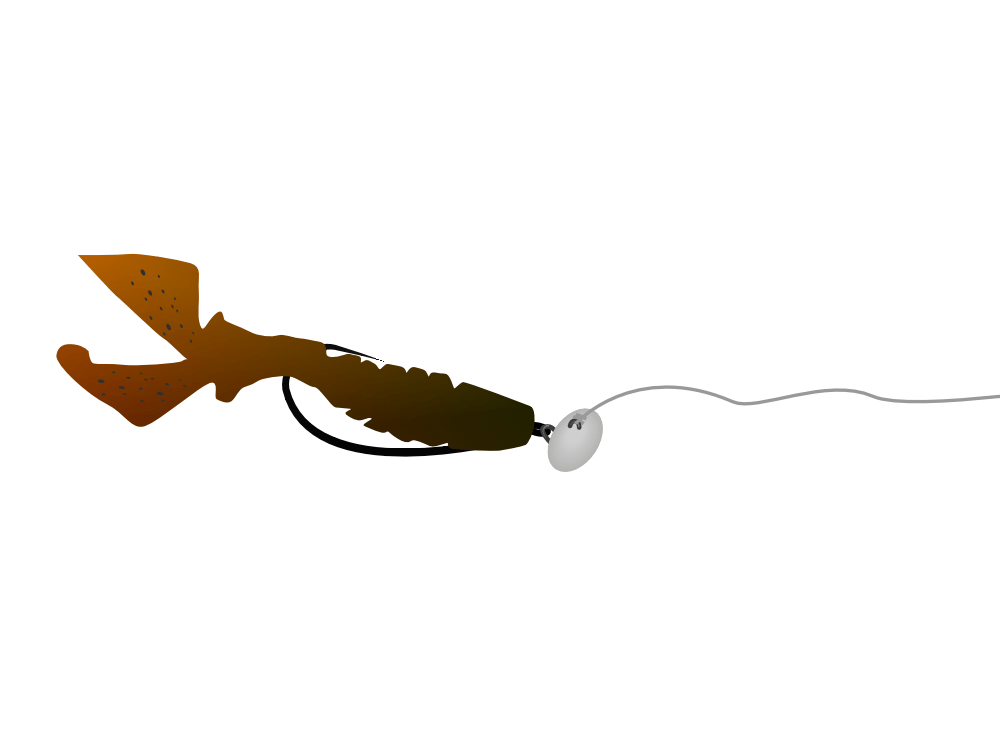
Swing jig heads are articulated at the hook-eye - and also ideally shaped to kick and bounce off rocky cover without snagging
Most often used with offset hooks to mount baits “Texas style”. These rigs are particularly good when used with creature baits such as various craw-style lures.
Swing jig approaches are great on hard-bottoms where the head bounces off the cover and kicks off at attractive angles (sometimes the tying on point is recessed within the weight to make it pull through cover more easily). Wind back at a steady retrieve pace – banging the bottom from time to time.
A fantastic tip from the guys at Tactical Bassin is to bend out the hook ever so slightly.
Only bend the hook-point out just enough to easily allow the bait to slide off the bend and expose the hook-point.
This will help to increase your hook-up rates when using fat creature baits. Inward-curved hook-bends can sometimes prevent a fat-bodied plastic bait from sliding clear of the hook-point when a fish grabs hold.
For more simple but big advantages, check out my Free tactical guide:
"Unfair Advantage" Lure Fishing Tactics...
Before I get into breaking down the spinning rig details and tactical choices to improve your jig fishing results - you might already know that the most consistently successful lure anglers will have more tricks, rigs and tactics to draw on than the Average Joe. I've pulled together some of my favourite "unfair advantage" knowledge and turned it into a free e-book as a subscriber bonus. It needed a catchy title - so the idea of downloading this and then being able to switch into "Fishing-god Mode" at any time made me smile...
Just Click Here or on the Book Image/Button below to register for your Free Copy - plus 5 more fishing secrets via email:
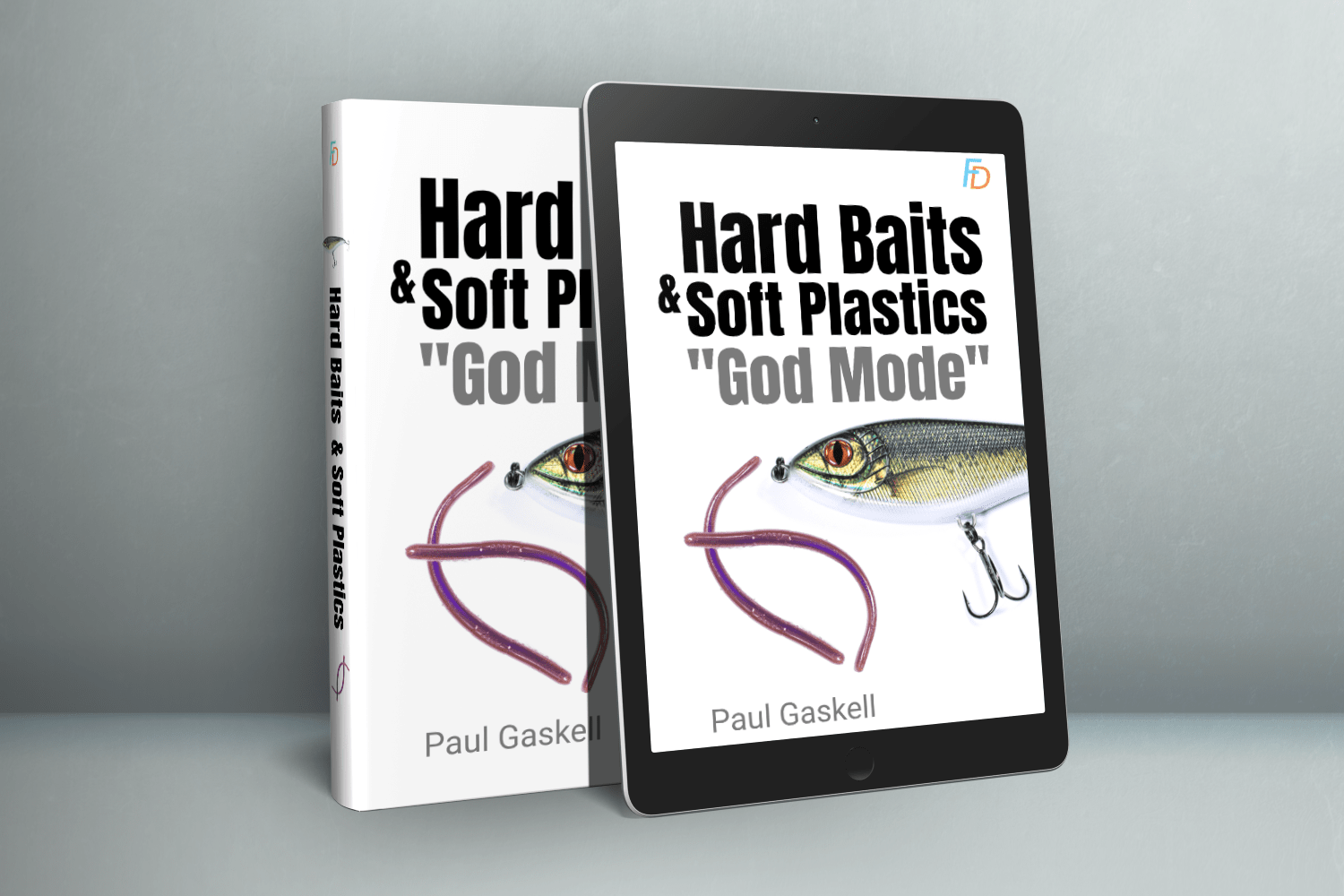
Jika Rig (fixed spool or baitcaster)
Ideal for “punch-shotting” – driving your bait into/through dense cover and then fishing a suspended/undulating soft plastic bait. Many of the advantages of a drop shot presentation – along with the ability to punch into cover; where predators like perch and bass love to hang out.
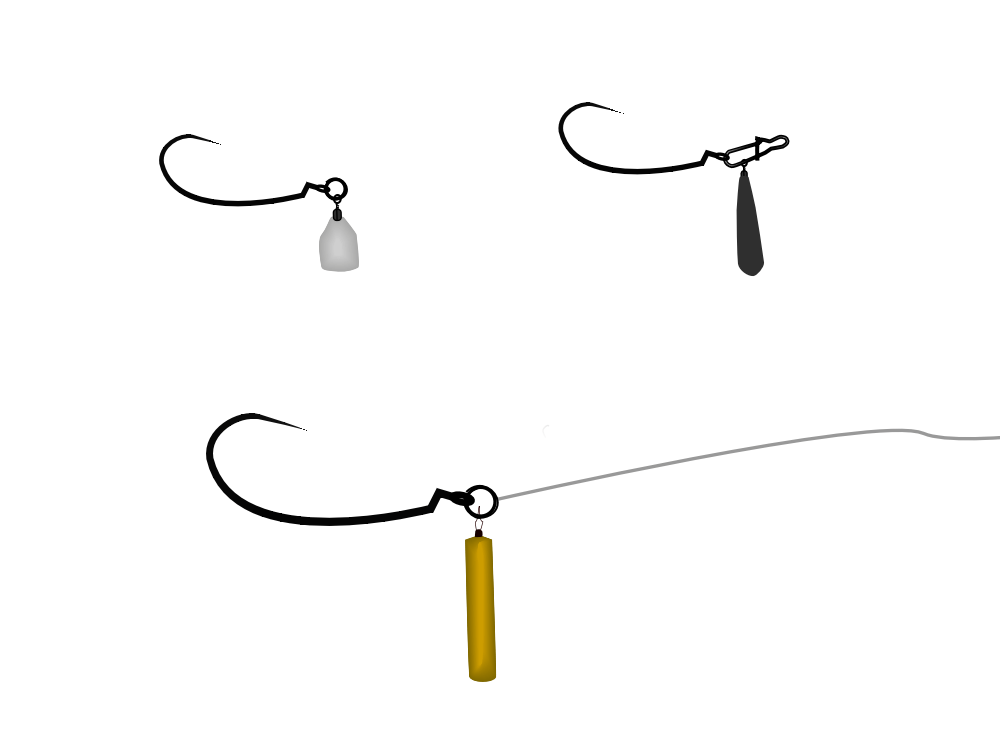
Just some of the ways you can make a Jika Rig (using either split rings or quick-change links)
If you’re able to get your bait into – and OUT OF – those areas where other anglers fear to go; you’ve got a big advantage. You can also use these in a similar way to a “swing jig” approach (above).
Tokyo Rig (fixed spool or baitcaster)
This is an evolution of a jika rig which enables punch shotting with the bait suspended higher off the bottom. The extension of a “boom” which attaches the weight in front of the lure “props” the bait higher up in the water with more separation from the bed.
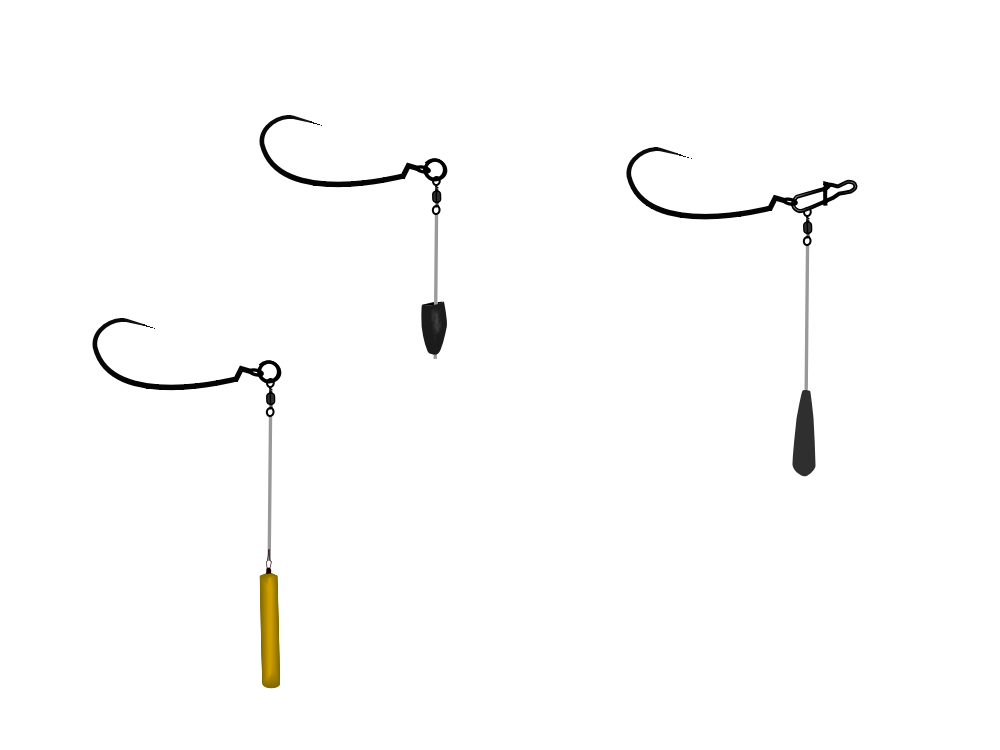
Again, there are multiple creative ways to make Tokyo rigs for bass and perch fishing
Potentially, if there is a layer of soft silt, that extended boom might allow the weight to reach a firmer substrate while keeping the lure clear of the silt. These bass and perch fishing rigs can also be used like a swing jig (above).
Ned Rig (BFS or fixed spool)
Special “mushroom” head weighted jig hooks are typically used to mount floating Z-man plastics. This makes the body and any appendages on the lure sit up at a steep angle off the bottom, while the flattened “mushroom” head weight stands on the bed. These can be twitched really slowly across the bottom and/or “dead-sticked” in one spot.
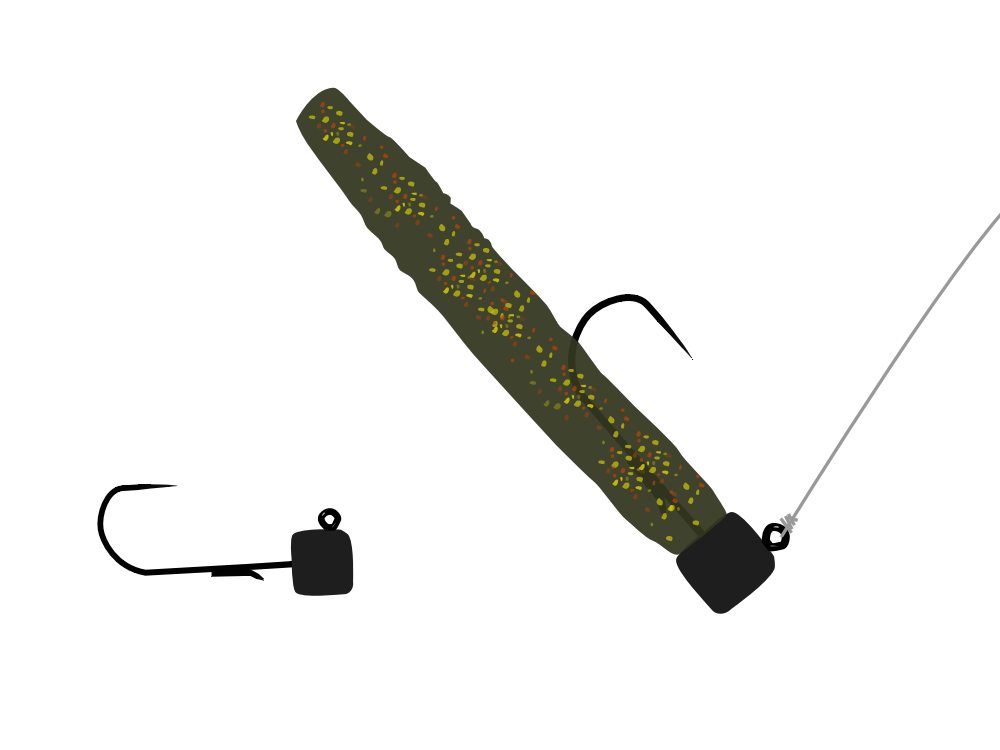
Standard Ned rig hook/mushroom head with bait-retaining spike (left) and with floating TRD lure mounted (right)
This style of presentation has really transformed winter perch fishing with lures. That’s what makes it one of the most important perch fishing rigs to have in your armoury if you want to extend your lure fishing through the colder months.
The Z-man range (no affiliation) of lures include great floating crayfish, bugz or tickler options! (it's worth checking out their range - even though we have no affiliation). Ned rig hooks may come with a flexible weed-guard to help this rig to be fished in light and medium-density cover.
A cool evolution of this approach can be to use it with a Jika rig – paired with floating plastics and mounted on the hook in a weedless style.
The weight-design and weedless Texas-mounting of the bait greatly reduce snagging, so don’t forget this option for your box of tricks.
Neko Rig
Many specialised, plastic worms are made from incredibly stretchy and resilient compounds (including the Z-man ElaZtech baits). Lures like this make it easy to screw in a small weighted “rod” into the head of a lure. You can then hook the lure in pretty much the same way you’d rig a real, live worm. Alternatively, using a stretchy “O” ring extends the range (and life-span) of lures you can use with this approach.
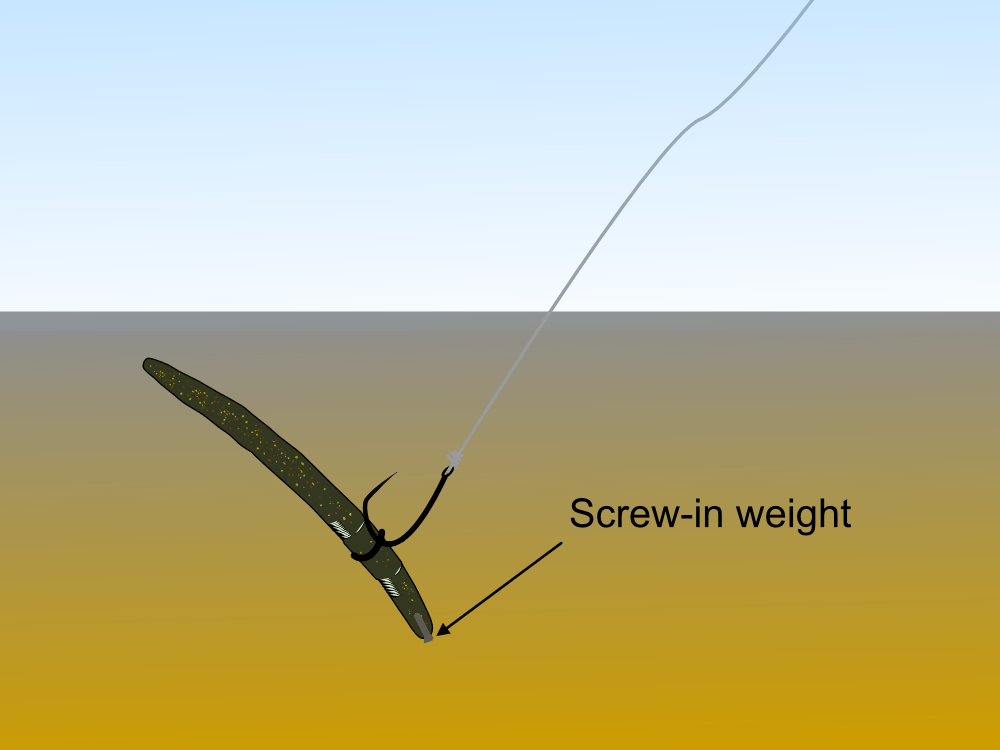
Neko rig with hook "in line" with the bait. To increase hooking potential you can use "O" rings with a small tab which allows you to position the hook point at right angles to the bait (or just pierce the bait itself with your hook). This also increases the chances of snagging up and losing your lure.
The combination of the weight buried inside the head of the lure and the hooking position create really attractive twitching, darting and wriggling actions. Because the hook-point is well exposed you get very good hook-up rates – but it also means this is usually best to use in open, snag-free water. See the next tactic for adapting to snaggy water.
Neko “Weedless Wacky” rig (predominantly fixed-spool reel)
This is a bass tactic by elite angler Shin Fukae – but as usual can be modified to create a range of fantastic perch fishing rigs. The idea is to use special Gamakatsu G finesse weedless wacky hooks (no affiliation) to mount a soft plastic finesse worm close to its centre to create a classic super-wriggly “wacky rig” – while benefiting from the built-in titanium weed-guards.
If you mount the hook so that it points along/in line with long axis it creates an even more weedless presentation… However (as noted above), for MAXIMUM fish-hooking potential, you need to hook the worm perpendicular the long axis (so the hook points sticks out from the side of the bait). Doing that does reduce the weedless performance though – so it’s always a trade-off.
Shaky Head Worm (fixed spool reel predominantly)
This is a really simple and quick rig for finesse worms (generally straight-tail) – or even slender creature baits. It lets you cover a lot of water with a weedless style – and also means you can stop and dead-stick in likely areas too.
Water coverage comes from fishing the “glide” as the worm sinks after casting it. Because the worm sits with its head down and tail up – you get a very attractive vibrating tail wriggle when you dead-stick with a high rod-tip.
Shaky head style is another good way to tackle soft/silty bottoms.
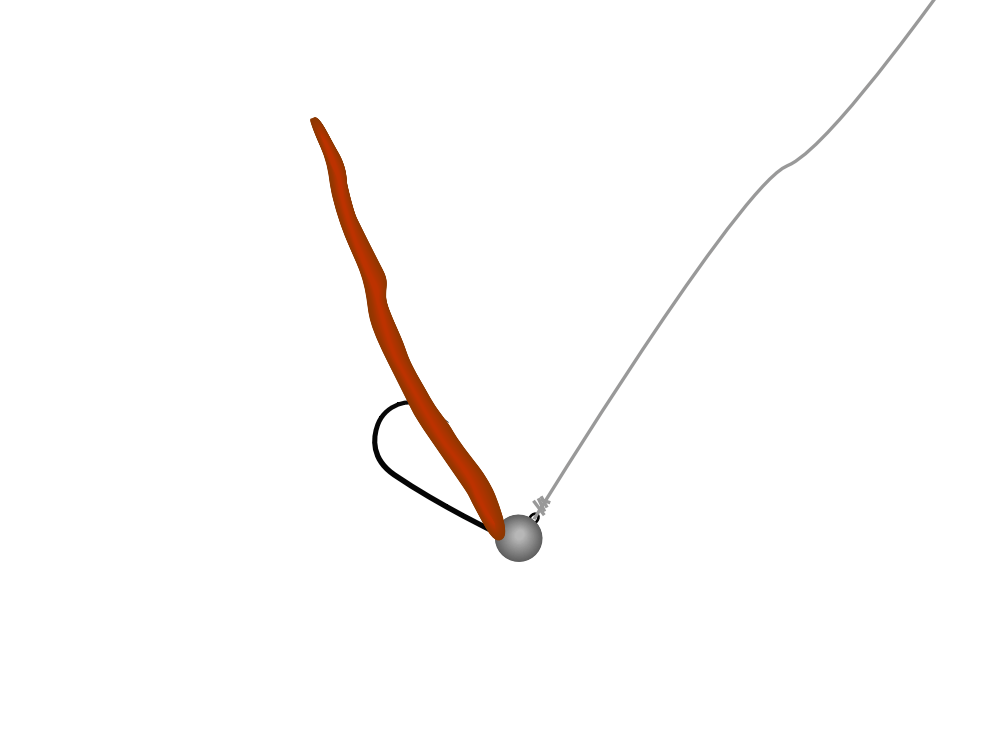
Shaky-head worms (with slightly flattened body) will "glide" forwards while sinking as long as you rig the flat sides parallel to the lake/river bed
The set up uses a weighted jig head hook (ideally with an offset hook) and a Texas-rigged bait with the flattened side parallel to the bottom. Rigging like this creates the glide along with the weedless performance.
Drop Shotting Perch Fishing Rigs
You can click on the following link for a full article on Dropshotting for Perch. Here are two "go to" perch fishing rigs using the drop shot:

Texas-style rigged worm and sliding/clip dropshot pencil weight (see dropshotting for perch article for tying the hook in place)
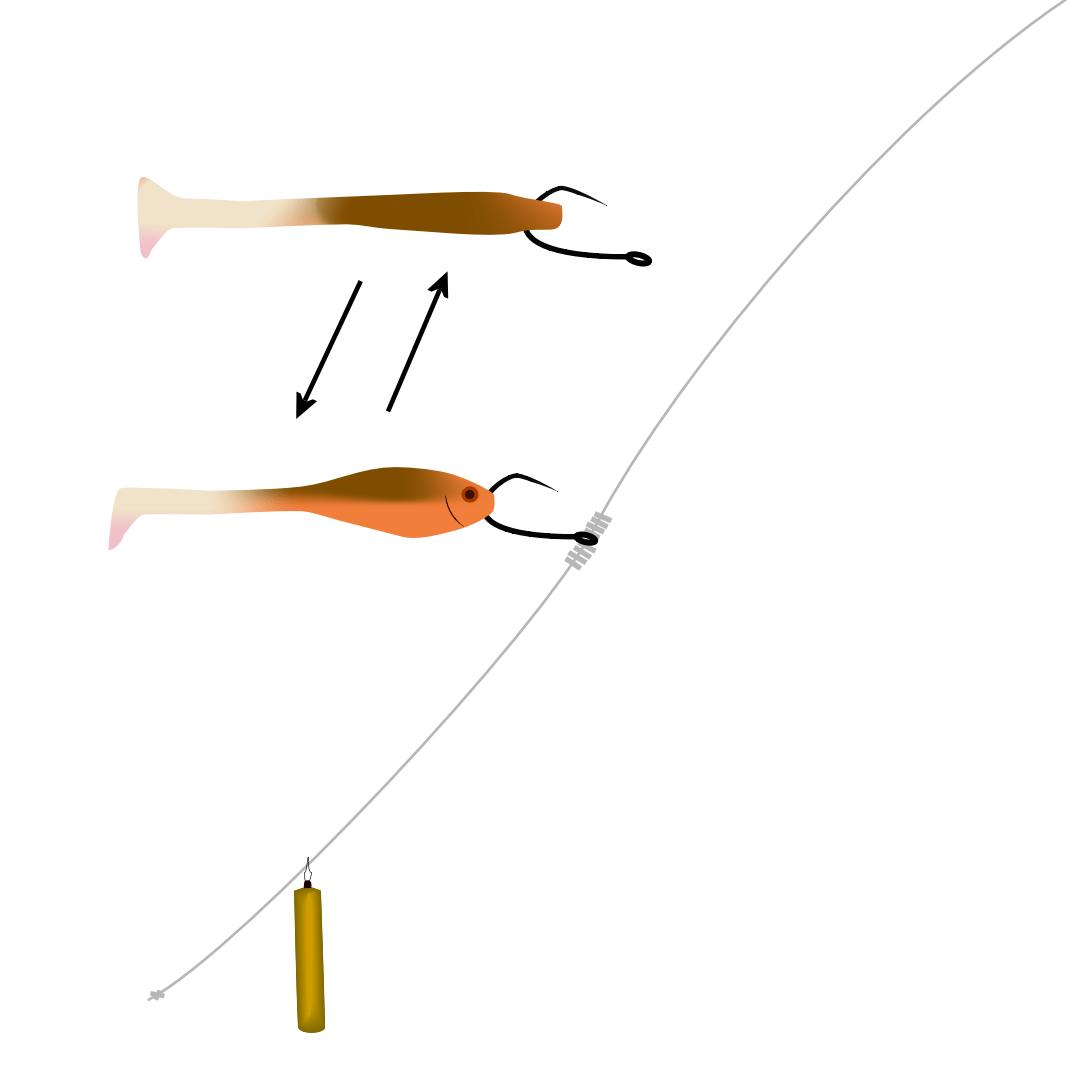
Soft plastic "fry" or "shad" style baits hooked at the head/lip end and presented on a drop shotting rig
Veltic Spoon Perch Fishing Rig
Don’t ignore one of the simplest and most traditional perch fishing rigs ever devised.
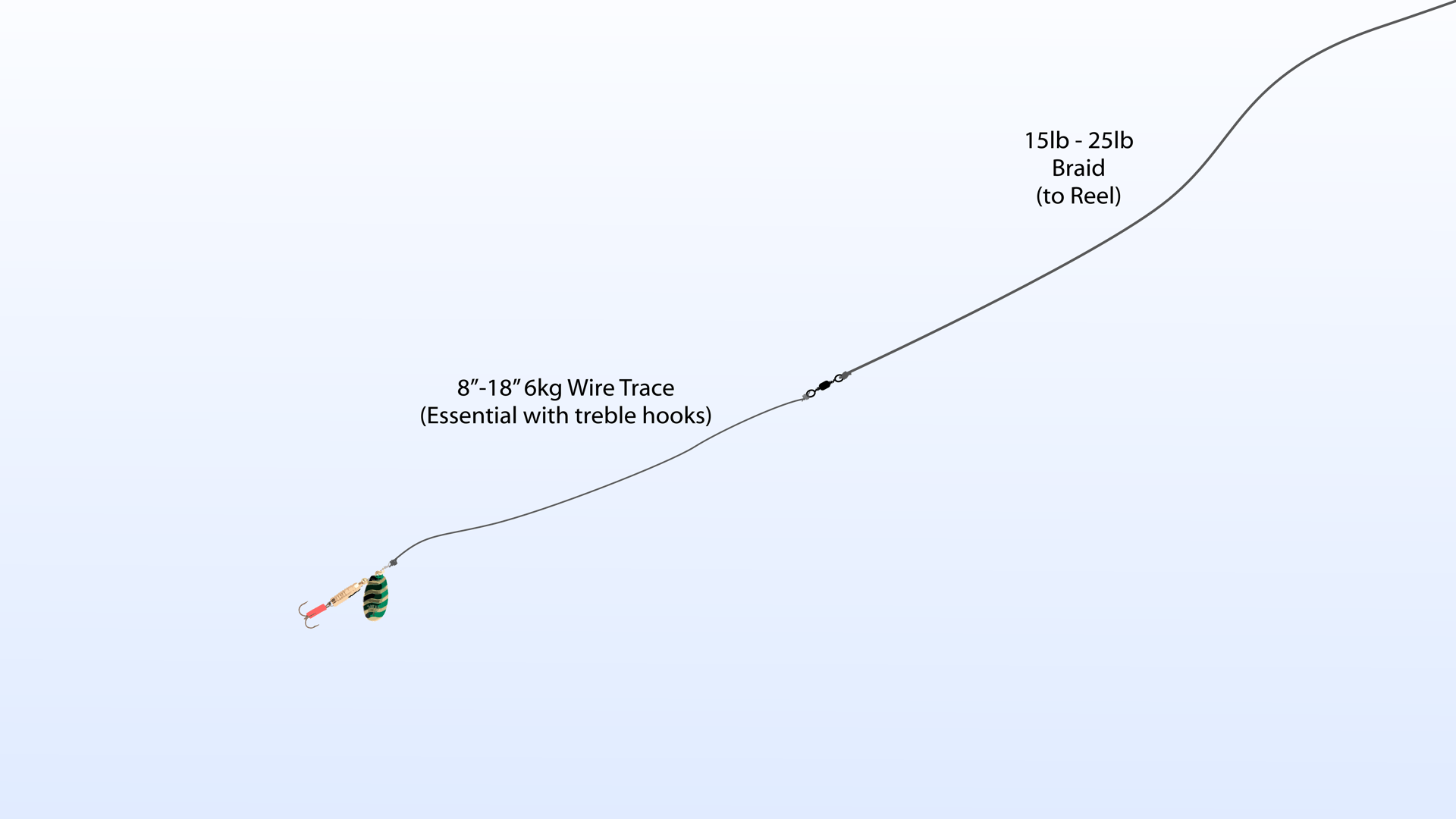
Old-school Veltic Spoons are one of the most under-rated specimen perch fishing rigs for use on rivers
Tim Jacklin broke his perch PB using this rig – but do take note that when treble-hooks are used you MUST include a wire trace. This is because you might accidentally hook a pike. If a pike bites through your standard fishing line trace, the treble hooks could seal its throat and kill it.
Perch Fishing Rigs for Bait
I’ll list and picture some of the best rigs I know for bait below – and to see the full details of these please click on our article for River Perch Fishing.
Trotted Worm/Bait rig
Suitable year-round (whether the conditions are cold or warm) though at its best in late summer/early autumn.
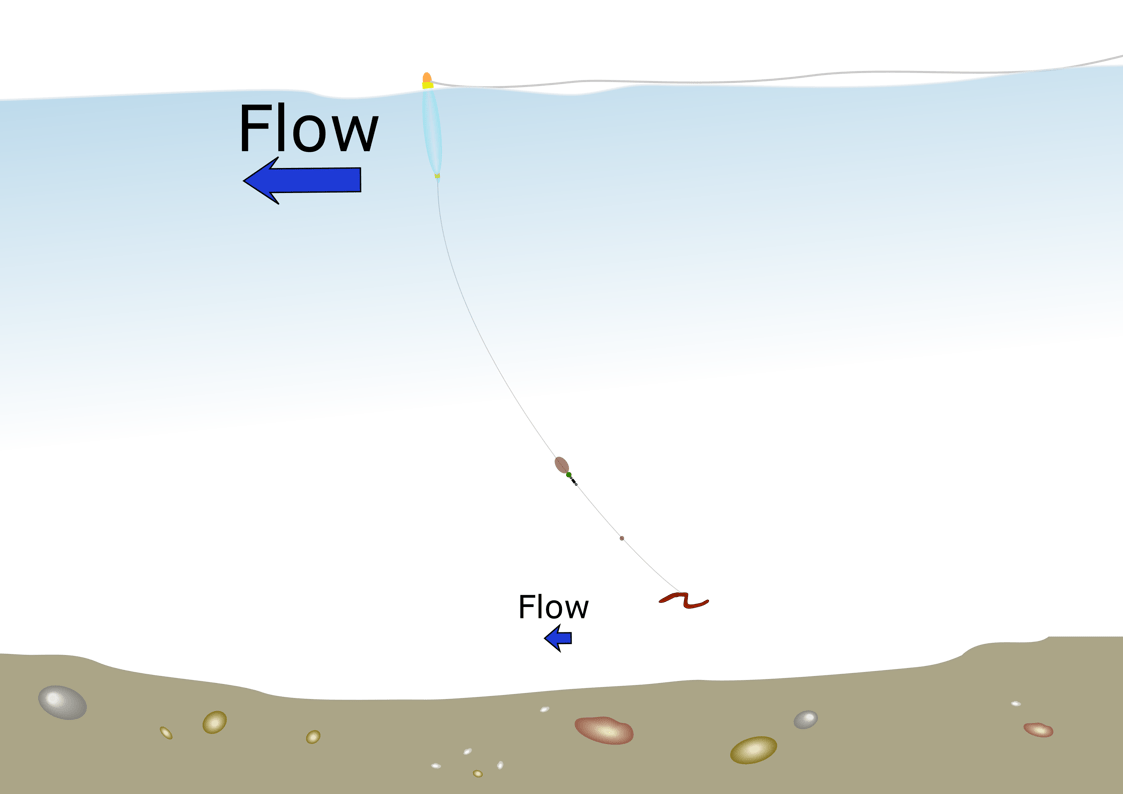
Using a crystal "loafer" float to trot a worm in flowing water
This is a great way to locate roving perch shoals.
Laying On method for slowed/static bait presentation
Designed to target more lethargic perch in the colder months of the year. Setting the float over-depth and allowing the terminal shot to drag on the riverbed lets you “edge” the bait through the swim.
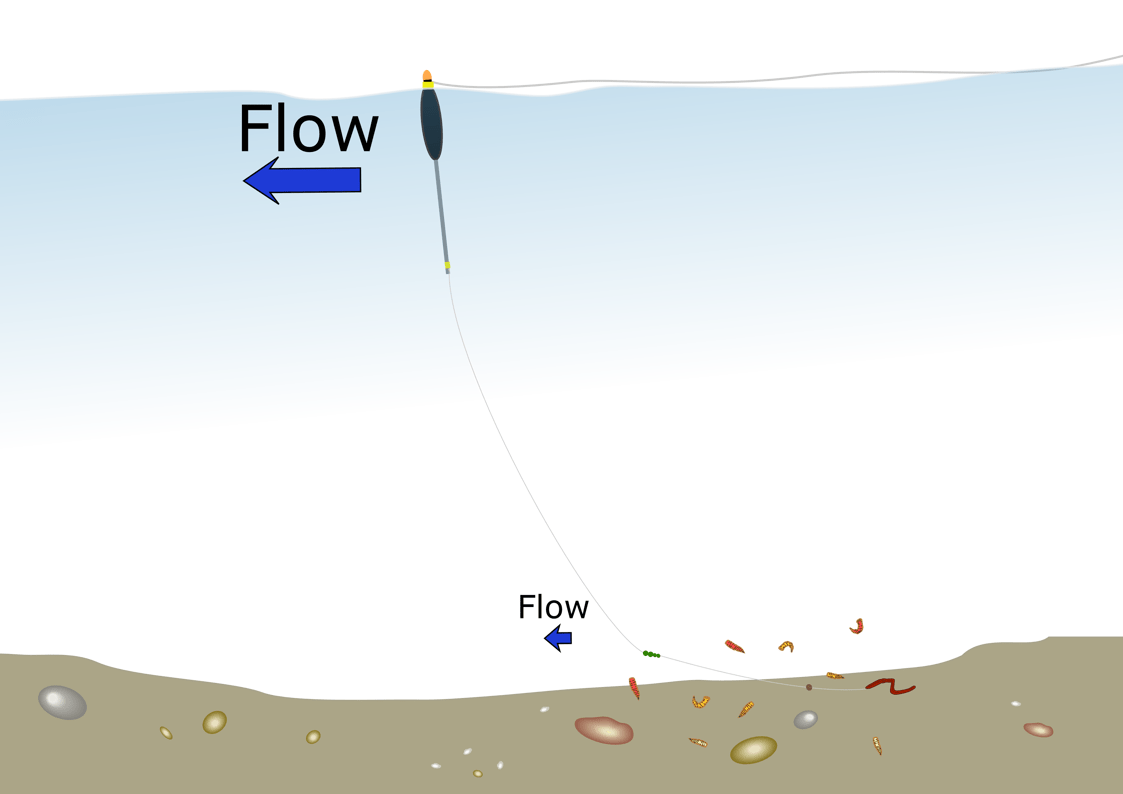
Avon Float example of "laying on" over-depth for perch in flowing water
Notice how this tactic only needs a small adjustment of the basic trotting rig. It shows how small details can make a big difference when building perch fishing rigs.
Livebait Paternoster (Archie Braddock Perch Fishing Rig)
For rivers with healthy populations of silver fish, a livebait paternoster approach can be a game-changer during the summer months.

Perch Fishing Rigs: Round-Up
Now you've got all these proven perch fishing rigs collated together in one reference page - go forth and catch fish!
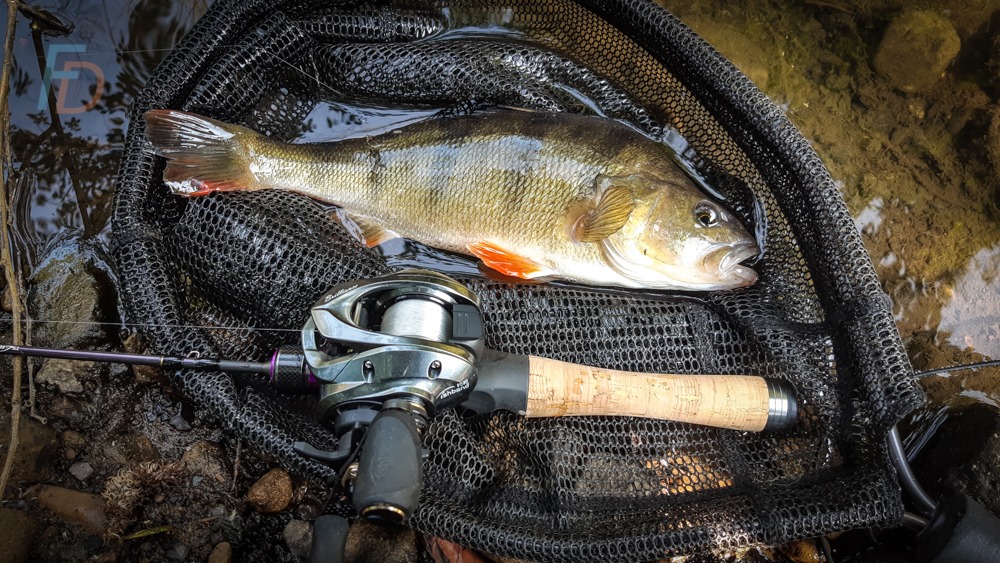
I'm conscious that I'll need to keep adding rigs to this over time, so I'll give a heads up on Facebook each time I add new things. One rig that I need to put in sooner rather than later will be the chatterbait option and I'm sure there'll be more (another obvious gap is in the fly fishing rigs genre).
Please let me know in the comments below what other rigs you'd like to see - or just if this article was helpful to you.
Don't forget to smash those social share buttons and help spread the love.
Paul
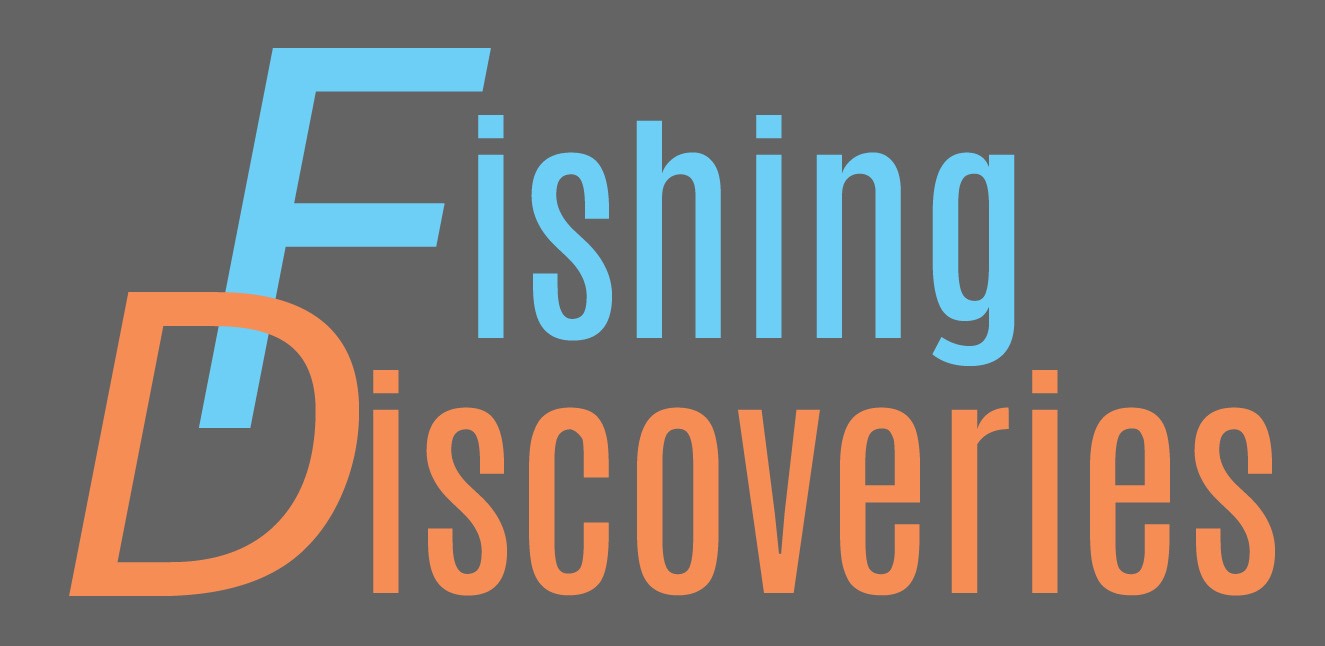
Most recently I am most fond of the Jika and the Free Rig (you missed that one ;).
Karel – I will look to add the Free Rig as soon as I can do a quick drawing… and that’s a great shout by the way; thanks. I know “Anorak SZN” loves that rig.
I’m using the kickback rig more and more. I feel it’s combining the best features of a dropshot en carolina rig.
Nice – like your style Danny!
Paul
Really nice summary, thanks Paul!
Thanks Karel – you’re very welcome and I’m glad you found it useful.
Paul